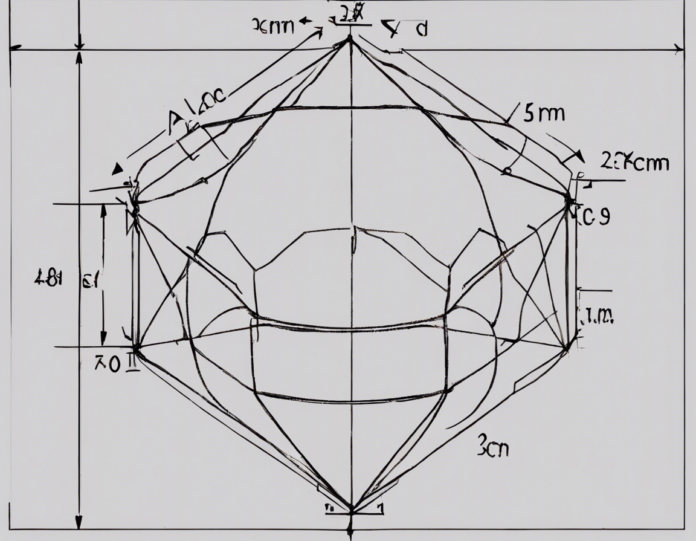As a professional in the field of mathematics, I am excited to delve into the topic of finding the volume of a unique geometric shape – a cube surmounted by a hemisphere. In this comprehensive guide, we will explore the step-by-step process of calculating the volume of this intricate composite figure. By the end of this article, you will have a solid understanding of the concepts involved and be able to apply this knowledge to solve similar problems in the future.
Understanding the Components
Before we proceed with finding the volume of the composite shape, let’s first understand the individual components involved – a cube and a hemisphere.
A cube is a three-dimensional shape that has six faces, all of which are squares. It is characterized by having equal side lengths and angles of 90 degrees at each corner. The formula to calculate the volume of a cube is given by V_cube = s^3, where ‘s’ represents the length of the side of the cube.
A hemisphere, on the other hand, is half of a sphere and is curved in shape. The formula for calculating the volume of a hemisphere is V_hemisphere = (2/3)πr^3, where ‘r’ represents the radius of the hemisphere.
Volume of the Composite Shape
To find the volume of a cube surmounted by a hemisphere, we first need to visualize the combination of these two shapes. The hemisphere sits on top of the cube in a way that its flat, circular base is in contact with the top face of the cube.
Step-by-Step Calculation
-
Calculate the Volume of the Cube: Determine the volume of the cube using the formula V_cube = s^3, where ‘s’ is the side length of the cube.
-
Calculate the Volume of the Hemisphere: Find the volume of the hemisphere using the formula V_hemisphere = (2/3)πr^3, where ‘r’ is the radius of the hemisphere.
-
Find the Total Volume: The total volume of the composite shape is the sum of the volume of the cube and the volume of the hemisphere.
V_total = V_cube + V_hemisphere
-
Substitute the Formulas: Replace V_cube and V_hemisphere with their respective formulas in the equation.
-
Final Calculation: Perform the calculations to find the total volume of the composite shape.
Example Calculation
Let’s consider an example where the side length of the cube is 5 units and the radius of the hemisphere is 3 units.
-
Volume of Cube:
V_cube = 5^3 = 125 cubic units -
Volume of Hemisphere:
V_hemisphere = (2/3)π(3)^3 ≈ 56.55 cubic units -
Total Volume:
V_total = 125 + 56.55 ≈ 181.55 cubic units
Therefore, the volume of a cube surmounted by a hemisphere with a side length of 5 units and a hemisphere radius of 3 units is approximately 181.55 cubic units.
FAQs
- Can the cube and hemisphere be oriented differently in the composite shape?
-
Yes, the cube and hemisphere can be arranged in various orientations, but the volume calculation remains the same based on their dimensions.
-
What if the cube and hemisphere have different units of measurement for their dimensions?
-
Ensure that all dimensions are in the same units before performing the volume calculation to maintain consistency.
-
Is there a specific formula for finding the volume of any combination of geometric shapes?
-
Each composite shape requires analyzing its components and applying relevant volume formulas accordingly.
-
Can the concept of finding the volume of composite shapes be extended to more complex figures?
-
Yes, the principles outlined in this article can be applied to more intricate composite shapes by breaking them down into simpler components.
-
How does the orientation of the hemisphere on the cube affect the total volume?
- The position of the hemisphere will impact the overall volume calculation, especially in cases where the orientation changes the overlapping volume.
By following the steps outlined in this guide and understanding the fundamental formulas for calculating the volume of the individual shapes, you can confidently determine the volume of a cube surmounted by a hemisphere. This process not only strengthens your mathematical skills but also enhances your problem-solving abilities when dealing with composite geometric figures. Remember to practice different scenarios to master this concept effectively.


Recent comments